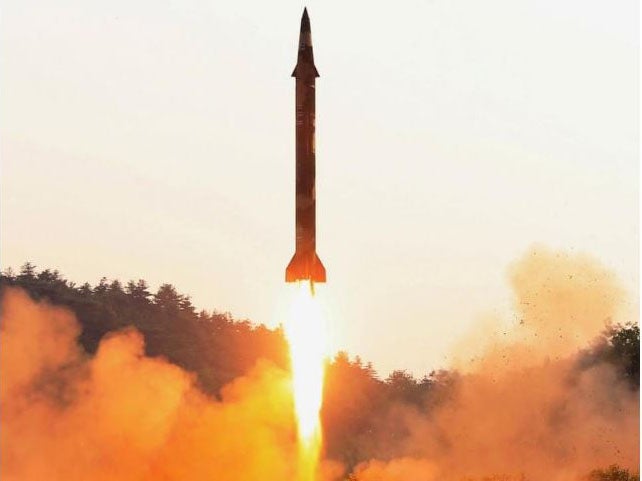North Korea is now able to hit Japan with nuclear missile, says Japanese newspaper
Projectile can travel 15 times speed of sound, claims report

Your support helps us to tell the story
From reproductive rights to climate change to Big Tech, The Independent is on the ground when the story is developing. Whether it's investigating the financials of Elon Musk's pro-Trump PAC or producing our latest documentary, 'The A Word', which shines a light on the American women fighting for reproductive rights, we know how important it is to parse out the facts from the messaging.
At such a critical moment in US history, we need reporters on the ground. Your donation allows us to keep sending journalists to speak to both sides of the story.
The Independent is trusted by Americans across the entire political spectrum. And unlike many other quality news outlets, we choose not to lock Americans out of our reporting and analysis with paywalls. We believe quality journalism should be available to everyone, paid for by those who can afford it.
Your support makes all the difference.North Korea now appears able to hit Japan with a nuclear missile, a Tokyo-based newspaper has reported.
The secretive state caused alarm in May when it test-fired a projectile in the direction of Japan. The intermediate-range missile flew for 30 minutes before crashing into the Sea of Japan, the stretch of water that separates the countries.
A source familiar with Japan’s national security situation told Japanese national The Nikkei that analysis of the test-firing indicated the country was capable of hitting Japan.
“North Korea appears to have completed the development of a Japan-targeted nuclear missile,” the paper reported the national security source saying.
The test-fired missile reportedly travelled at 15 times the speed of sound. Japanese and US military officials said the missile flew around 800km and reached an altitude of 2,000km before it dropped into the sea.
The projectile did not disintegrate when it reentered the atmosphere, which experts said was an indication that it could be capable of carrying a warhead.
It is believed the missile's electronics were able to monitor the inside temperature and flying speed, according to the report.
The Nikkei is the world's largest financial newspaper, and its parent company Nikkei Inc owns UK-based publication The Financial Times.
Subscribe to Independent Premium to bookmark this article
Want to bookmark your favourite articles and stories to read or reference later? Start your Independent Premium subscription today.
Join our commenting forum
Join thought-provoking conversations, follow other Independent readers and see their replies
Comments